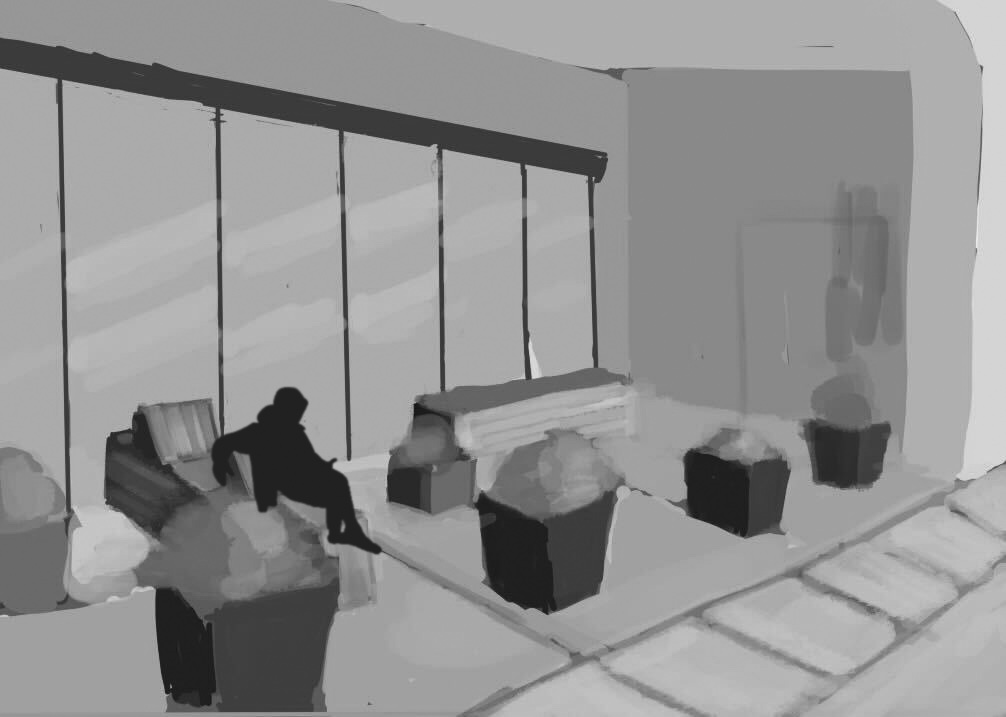Barriers, spikes and armrests now lie where the unhoused once did. Has Palo Alto’s recent hostile architecture reduced homelessness or just moved it from one place to another?
According to Bay Area Council, the Bay Area homeless population has grown 9% since 2020 and is the third largest homeless population in the U.S.
To combat the growing presence of unhoused people on streets, cities and developers have turned to hostile architecture, a design strategy that prevents people from using public spaces, according to the Neighborhood Design Center.
As hostile architecture gains popularity in cities like New York and San Francisco, these designs are slowly creeping into Palo Alto’s development.
Today, there are countless benches in Palo Alto with ridges and designs that prevent people from reclining or sleeping on them. Some examples include the benches on Lane 20 and Florence Street, next to the California Avenue train station, and benches throughout University Avenue.
Carlos Wadkins, director of the Coalition on Homelessness Development, says some hostile architecture can look like putting spikes on benches so people can’t sleep or neighborhoods putting planter boxes on sidewalks. According to Wadkins, hostile architecture is a recent approach made by cities and local neighborhoods.
“Most people’s immediate response to homelessness — and the city’s immediate response to homelessness — is trying to get people to move,” Wadkins said.
According to Wadkins, hostile architecture is not an effective solution to homelessness issues nationwide.
“This current [homelessness] crisis has been around since the 80s, and it’s the result of policy changes,” Wadkins said. “There’s homeless people everywhere, and forcing people to move from one sidewalk to a different sidewalk in the same city doesn’t actually solve anything.”
Unlike Wadkins, Mihail Feshete, owner of Nob Hill Hardware on California Avenue, said he believes that hostile architecture is a positive concept. At his original location in San Francisco, he often encountered homeless people in his way.
“I can’t tell you how many times I’ve moved the homeless from the front of the door sleeping there when we go to open,” Feshete said.
Although Feshete believes that hostile architecture is helpful, he believes homelessness is a problem that should not exist in the first place.
“As a society, we are doing something wrong if we are making more and more people become homeless,” Feshete said.
Feshete has not experienced the structures specifically in Palo Alto working to keep people off.
“As soon as we create something, they will be right there sleeping on that thing,” he said.
People like Human Services Manager Minka Van Der Zwaag are contributing to solving this problem in Palo Alto. Van Der Zwaag supports and amplifies Bay Area nonprofits that provide services to the unhoused.
“I facilitate a bimonthly meeting with service providers for the unhoused and we get together to talk about current issues,” she said.
Wadkins says that his ultimate goal is to invest in legitimate solutions to homelessness like affordable housing, homelessness prevention programs and drug and mental health achievements. But Wadkins said that hostile architecture is more of a local problem with local solutions.
“People can really communicate with their neighbors, and try to … come up with solutions that are better than putting a bunch of planter boxes on their sidewalk,” Wadkins said.
Additionally, according to Wadkins, people experiencing homelessness experience a level of instability no one should go through. In order to achieve solutions to homelessness, Wadkins says that society must let go of preconceived stereotypes and treat homeless people with respect.
“Anything that’s keeping people in a state of survival, making them move more often, making them not able to find a place to lay down or rest … [will] make their condition worse,” Wadkins said. “And beyond that, there’s a cultural, social aspect of dehumanizing our neighbors and wanting to see people as pests to be controlled through architecture. We really need people to see each other’s humanity and try to take care of each other … in the most desperate times.”





